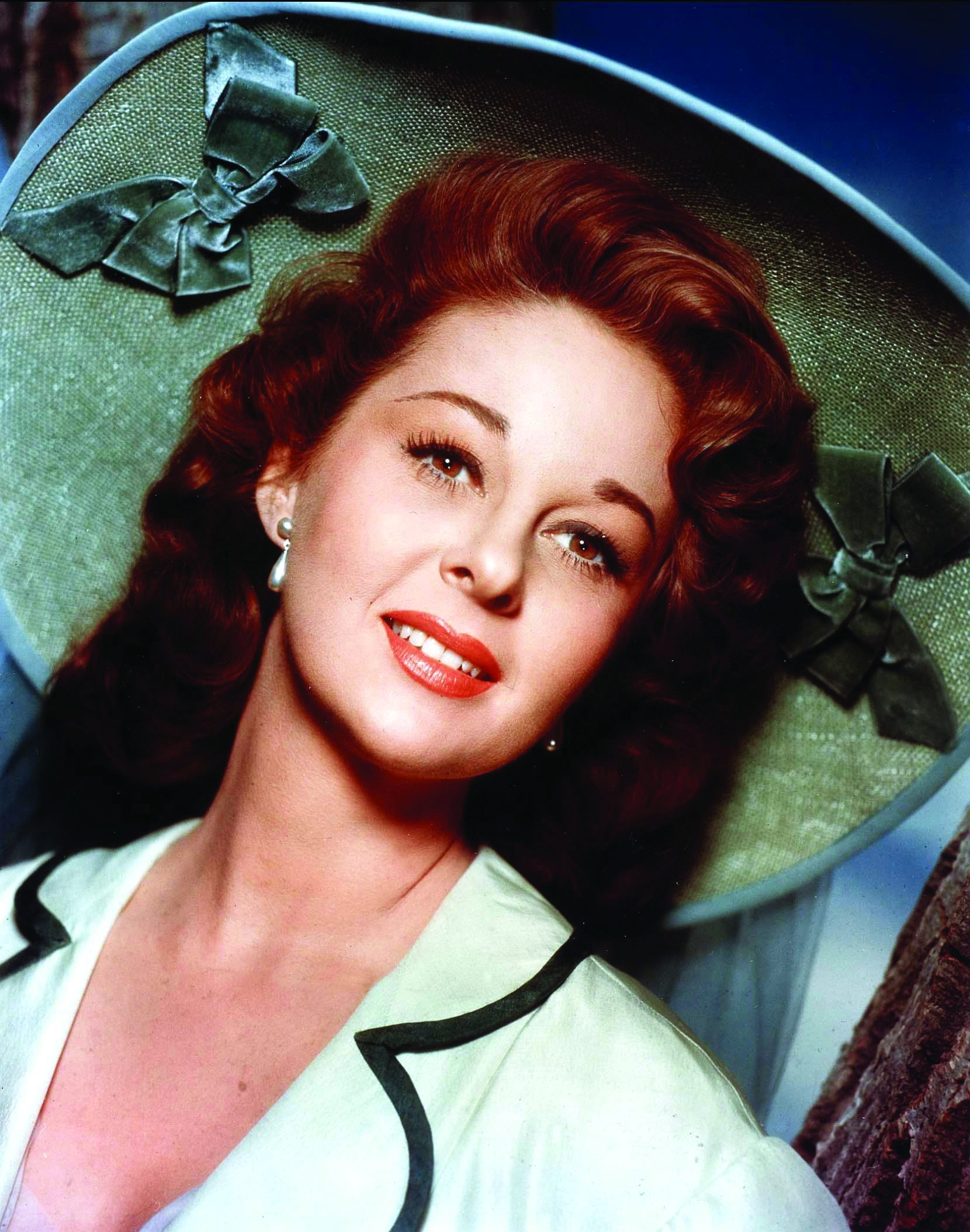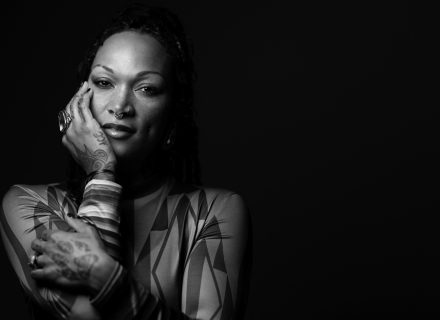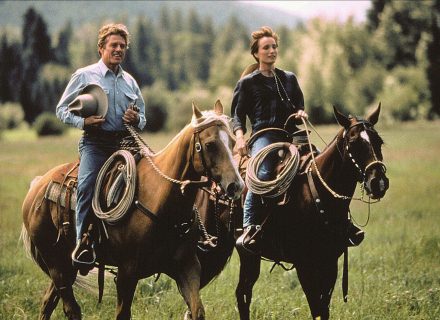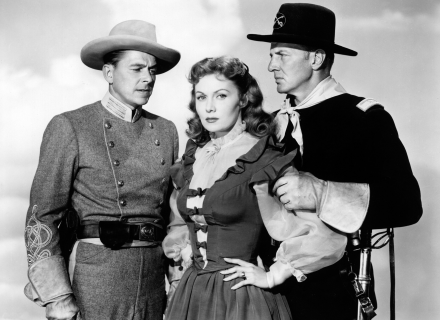We survey the classic westerns of late actress and talented equestrian Susan Hayward, known in Hollywood circles as the “Brooklyn Bombshell.”
At the beginning of Susan Hayward’s movie career in 1937, she was rejected for the most coveted role in film history: that of Scarlett O’Hara in Gone With the Wind. It was the first of several false starts for an actress who would one day be admired as much for her persistence as for her talent.
Just six of Hayward’s more than 60 films were westerns, but she was a natural fit in the genre and no stranger to rough-and-tumble roles. Few A-list stars played as many women subjected to so much abuse, and audiences were captivated by the contrast between her waif-like beauty and the ferocity of her characters. No one was ever drowned, burned, stoned, beaten, or fried in the electric chair quite like Susan Hayward. After all those on-screen travails, spending a few months on horseback in the wide-open spaces of the West probably seemed like a working vacation.
 Although only a small percentage of Hayward‘s films were westerns, she took to those roles like a duck to water.
Although only a small percentage of Hayward‘s films were westerns, she took to those roles like a duck to water.
Canyon Passage (1946)
Susan Hayward’s first western was distinguished by the gorgeous scenery of Oregon’s Umpqua National Forest, the Oscar-nominated song “Ole Buttermilk Sky,” and the direction of Jacques Tourneur, also making his western debut after a successful run of distinctive horror movies.
Hayward plays the fiancée of a banker (Brian Donlevy) who dips into the deposits to reimburse his gambling debts and kills to cover his tracks. Over the course of the film, her character falls in love with the scout who is also her fiancée’s best friend (Dana Andrews). Hayward was an avid horseback rider from early childhood but had to learn to ride sidesaddle for the film.
Tulsa (1949)
“Meet Cherokee Lansing, Half Wildcat ... Half Angel ... All Woman!” Such provocative promotion propelled Tulsa to profitable box office receipts and further established top-billed Susan Hayward as one of Hollywood’s most charismatic stars. It is arguably her best western, packed with romance and action. The climactic fire that destroys Cherokee’s oil-rich lands was one of the most impressive special effects featured in any 1940s film and was used as stock footage in many other movies of lesser pedigree.
Eduardo Moreno, author of The Films of Susan Hayward, singled out Tulsa as “one of the first movies where you could see some of the real Susan Hayward: ambitious, fighting all the way to the top.”
Rawhide (1951)
Throughout the 1950s Hayward consistently was ranked in the Hollywood press as one of the screen’s most beautiful and popular stars, with her red hair always singled out as her most appealing attribute. It’s on grand display in Rawhide, a western that plays more like an Alfred Hitchcock thriller.
She plays Vinnie, a woman held hostage at a stagecoach relay station with a stranger, played by Tyrone Power, whom a band of thieves assume is her husband. Several escape attempts are made before the action-filled climax. Power and Hayward aren’t a couple but they look great together as they join forces against the captors, played by Hugh Marlowe, Dean Jagger, and Jack Elam. In the final confrontation, it is Hayward, not Power, who takes down their last captor.
The Lusty Men (1952)
The best rodeo movie ever made is an often-overlooked classic western starring Robert Mitchum as a former champion bull rider, now broke and broken down, who helps train another rider (Arthur Kennedy), while pursuing his wife, played by Hayward. The scene in which she brawls with Eleanor Todd further enhanced her reputation as one of the screen’s toughest dames.
Everything about The Lusty Men is first-rate, from the cast to Nicholas Ray’s direction to the remarkable cinematography of Lee Garmes, much of it on location at rodeos in Tucson, Spokane, and Pendleton. Watch for appearances from such real rodeo figures as Gerald Roberts, Jerry Ambler, and Les Sanborn.
Garden of Evil (1954)
Leah Fuller (Hayward) hires three soldiers of fortune (Gary Cooper, Richard Widmark, Cameron Mitchell) to guide her through dangerous territory to a gold mine where her husband is trapped. The film was shot on location in Mexico and was the first movie photographed in the CinemaScope anamorphic widescreen process, which showed off the desert vistas to great advantage.
Of all Hayward’s westerns, this is the one that best shows off her riding skills, which she also displayed during a break in filming upon spotting a small boy walking dangerously close to the edge of a volcano crater. She rode towards him, leaped from the horse, and caught him just before he fell.
Thunder in the Sun (1959)
Sadly, Susan Hayward’s western career did not end on a high note with this, her first film to be released after her Academy Award-winning performance in I Want To Live. Once again, she finds herself amid a love triangle, with a group of Basques en route to California to start a winery. Her sultry flamenco dance near the start of the film is a rare highlight.
From our October 2024 issue.
PHOTOGRAPHY: Courtesy of Alamy

















